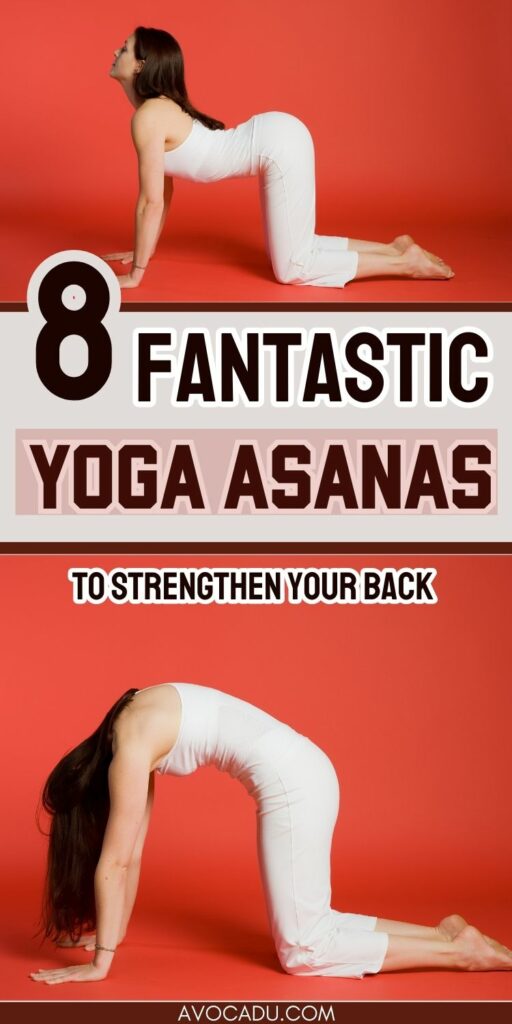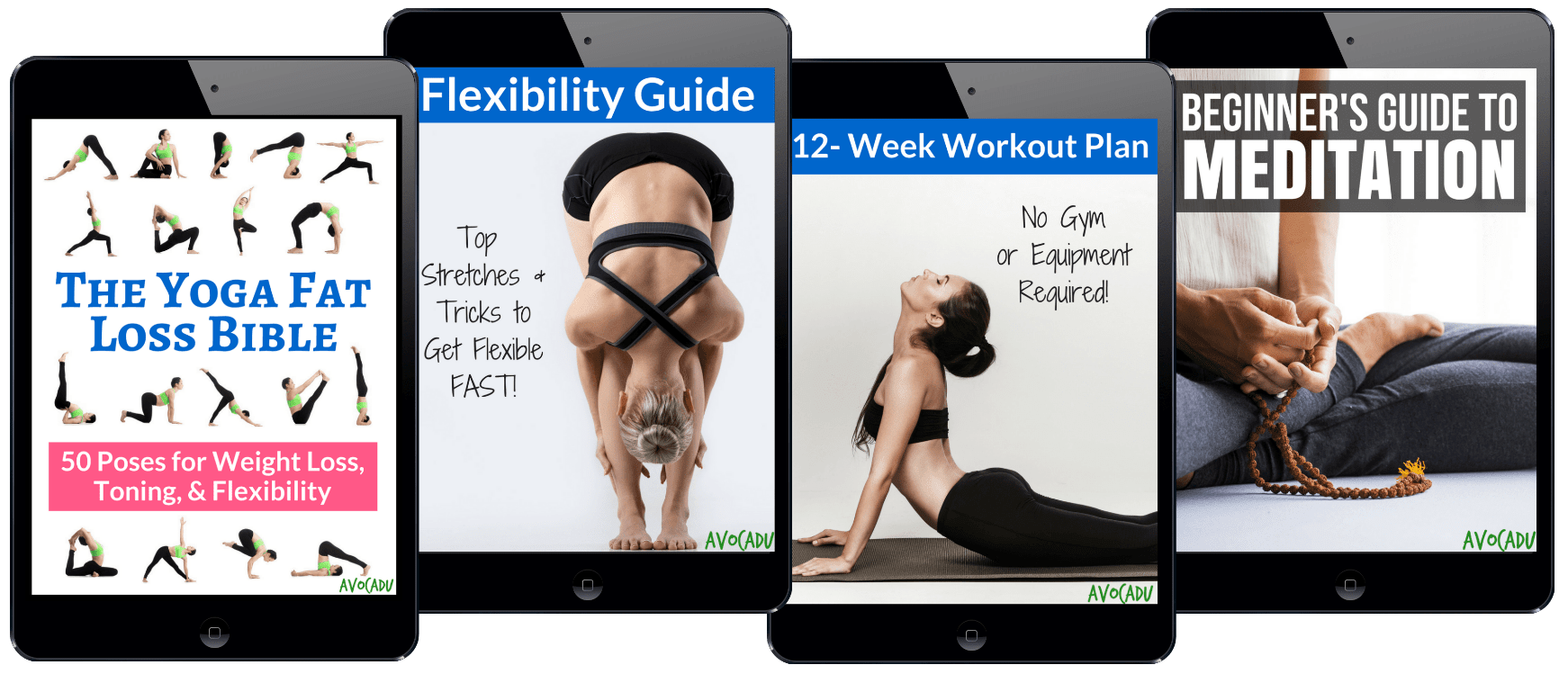8 Yoga Asanas to Strengthen Your Back
It’s no secret that yoga is healthy for our bodies overall, but did you know it can help relieve back pain while strengthening back muscles?
A 2009 study featured on PubMed found that yoga reduces pain in adults who have chronic lower back pain. This makes sense since many yoga poses aim to strengthen back muscles.
By working on muscles in the back region, people who routinely perform yoga can reduce pain and grow stronger.
One perk of yoga for muscle development is that each pose works than one muscle group, giving you an all-over workout while you target specific areas. Plenty of yoga asanas strengthen core muscles and target other muscle groups.
Using your own body weight through yoga poses is an effective way to build muscle in every part of your body, and especially in your back. You can even achieve results that gym just machines can’t compete against.
If you’ve been battling back pain or just feeling a little too “achey” lately, these yoga poses are for you!

This post may contain affiliate links, which helps keep this content free. Please read our disclosure for more info.
1. Cat-Cow
Less a demanding yoga pose and more a relaxed stretch, the Cat-Cow asana is a gentle and flowing movement that stretches your back. CNY Healing Arts covers the basics of the pose’s health benefits.
As you inhale and exhale through the movements, you’ll stretch and strengthen your neck and spine. Wedging your chin to your chest won’t help master the move, so keep it loose.
This is a pose that demands synchronized breathing with its movements, which serves to alleviate stress and help you feel calm. It also aids in stimulating your internal organs as you move.
Finally, the Cat-Cow asana offers a thorough stretch that gets you ready for an energizing and strengthening yoga session.
2. Triangle
The second example suggests more work by the waist area muscles, including the lower back. Yoga Sidsel’s video shows demonstrations of variations on the Triangle Pose.
While many variations exist for the Triangle, or Trikonasana, pose, most of these variations still benefit the same muscle groups.
As an article by Anatomy Studies for Yoga Teachers explains, there isn’t a “wrong” way to do the Triangle pose, necessarily, but there are slight modifications based on varied abilities.
For example, Iyengar yoga uses an energetic posture, with the front knee and thigh facing the front. The spine is in a mild backbend and is slightly rotated.
Conversely, Integral and Sivananda styles don’t focus on alignment of the feet, and the front thigh is rotated so that the knee is pointing to the side.
3. Downward Dog
Since Downward Dog is a pose that’s well-known, you might think that it’s self-explanatory in form. Yet many practicing yoga enthusiasts haven’t perfected their form, and so aren’t seeing their full potential regarding muscle development.
Breaking Muscle explores the nuances of Downward Dog, noting that proper form is important to reap the benefits of the pose.
When you practice a proper Downward Dog, you’ll release tension from your spine and relieve back pain. With proper alignment, the spine elongates, and further refinements perfect your pose.
Keep your head aligned with your spine, drawing one line through your entire body. Breaking Muscle suggests taking five breaths at a time, then resting in between each pose.
4. Upward Facing Dog
This simple back-bending pose helps strengthen your back and spine, serving to undo the damage done to your body after hours in your office chair or your car. At the same time, Upward Facing Dog tones arms and legs and stimulates your abdominal organs.
Active gives tips for Upward Dog specific to athletes, who benefit from increased agility in practicing this asana. However, they do note that athletes or other individuals who have suffered injuries to their backs should avoid this pose.
In addition to strengthening your back and core, Upward Dog also stretches your quadriceps and hip flexors. Keeping those areas balanced and loose lowers your risk of pulling a muscle.
5. Child’s Pose
This pose often serves as a resting asana in between more demanding poses, but it’s also a relaxing stretch that helps work out sore back muscles and elongate them.
It might look simple, but Child’s Pose is an active movement along your back and spine, with deliberate movements that loosen tight muscles and build stamina. It feels relaxing, but it’s also working on the muscles at the front and back of your body.
Child’s Pose also encourages blood flow to your head and shoulder area, letting you feel grounded and stress-free. Your entire core will feel the benefits of this pose, as it develops overall abdominal and lower back strength.
You can also use this posture to rest between other more challenging poses, especially after inversions which require a readjustment period, before moving on to the next pose.
6. Plank
This balancing yoga asana tones your abdominal muscles and strengthens your back. Build strength and stamina in your entire body by involving your core in a Plank pose.
Yoga Outlet notes that this pose is usually a precursor to more challenging arm balances and that it serves to improve posture since it bulks up the muscles around your spine.
If you haven’t yet worked up to supporting your full body weight in a Plank pose, try a Half Plank first, letting your knees touch the floor.
In either variation of the pose, keep your body in a straight line with no sagging. Avoid locking your elbows and keep the joints soft instead. Try to hold this pose for as long possible to build your endurance.
7. Locust
In contrast with many standard yoga asanas, Locust is primarily back-focused move. While many poses target the abdominal muscles, Locust strengthens your core and all the muscles along the back of your body.
As Do You Yoga explains, this exercise is not just great for developing strength, but it’s also safe and effective for people with lower back pain or mild sciatica. The goal of Locust is to strengthen your muscles gradually and avoid overextending.
Over time, you’ll work your back muscles to the point that you can lift yourself higher in Locust pose. At the same time, you’ll tone your legs too, especially when entering and exiting the pose multiple times.
8. Camel
Strengthen muscles, alleviate pain, and realign your spine by incorporating the Camel Pose, according to a post by Bikram Yoga Richmond. This asana helps create space between each vertebra in your back and may relieve symptoms of bulging discs.
While the Camel Pose is great for back pain and building up muscles, it also helps stretch the internal organs, aiding in digestion while developing your core. It also tones your abs and thighs, especially with repetition.
If you are looking for a little more guidance on what poses are right for you and how to put them together for a practice, my Yoga Fat Loss Bible for Beginners would be a great place to start.
It comes with a complete flexibility guide that also has many beginner modifications to help you loosen up your muscles and relieve your aches and pains faster than ever!


Hi, just wanted to say, i like your post. Its wast practical. Keep on posting.
I was always curious about yoga. This information was very helpful.